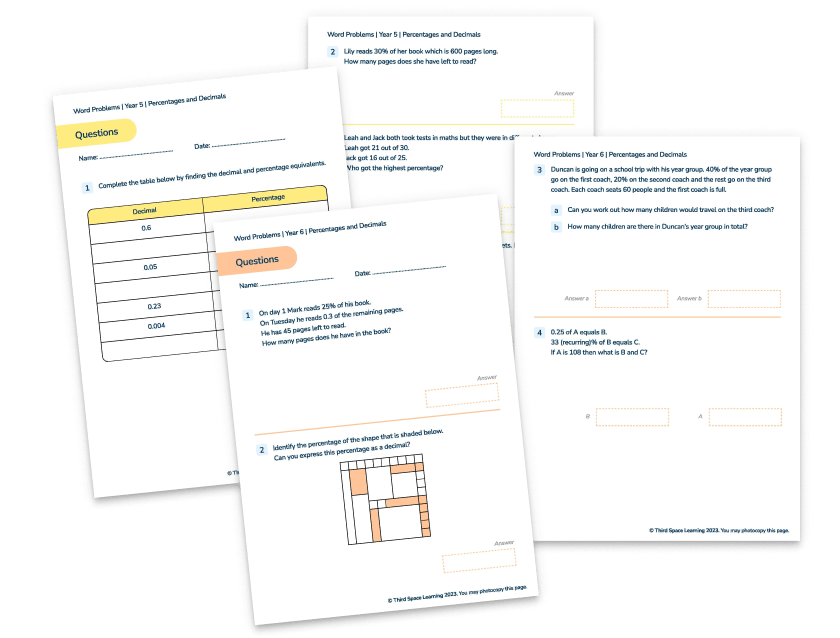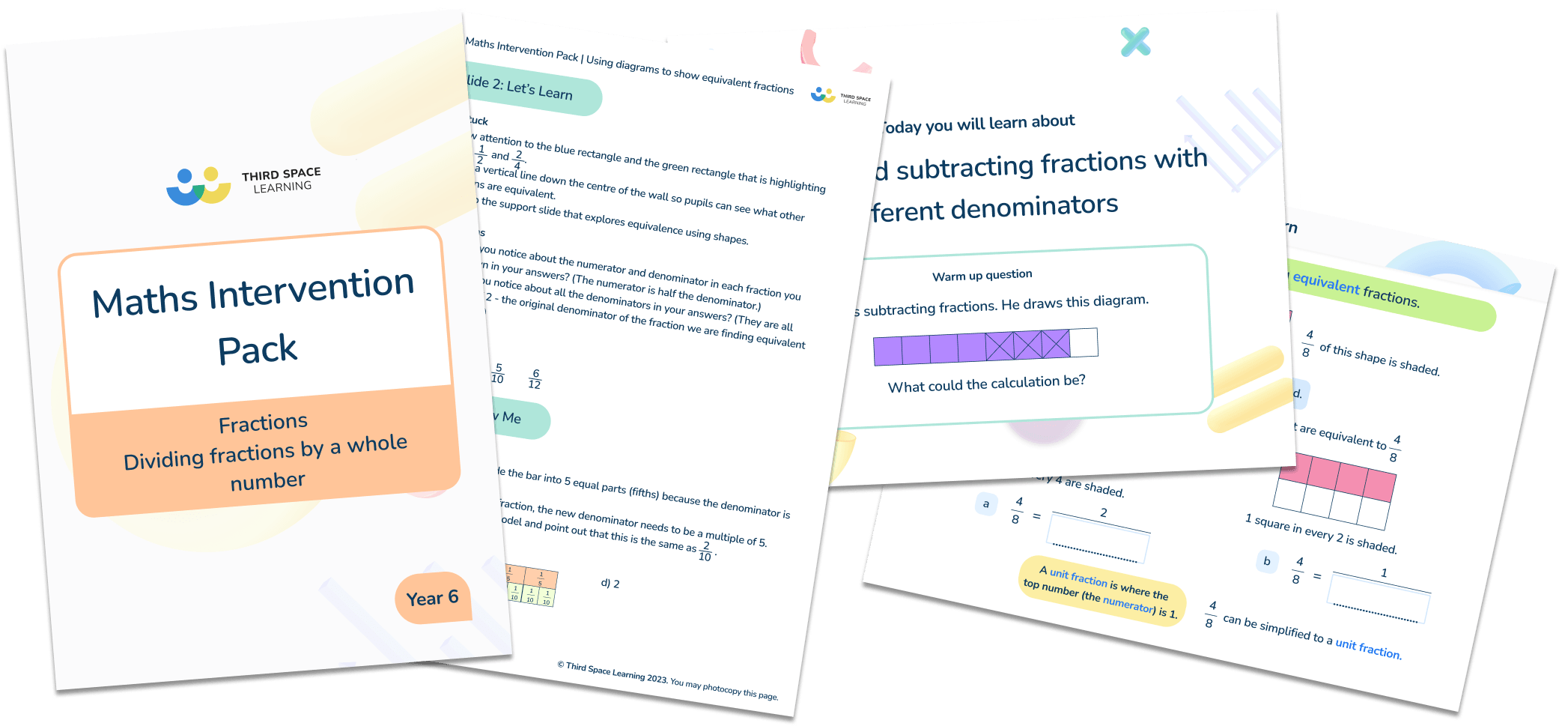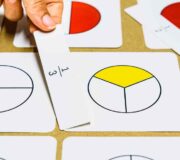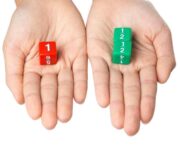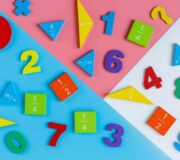What Is A Non-Unit Fraction: Explained For Primary Schools
Fractions are taught right from early years, beginning with proper fractions (unit and non-unit) and progressing to improper fractions in Upper KS2.
What is a non-unit fraction?
A unit fraction is one part of a whole (the numerator is always 1). Examples of unit fractions include ½, 1⁄7 or 1⁄376. A non-unit fraction is a fraction with a numerator (top number) greater than 1. They could be proper fractions (less than 1 whole, where the denominator (bottom number) is larger than the numerator) or improper fractions.
Examples of non-unit fractions
⅔, 6⁄11 and 29⁄100 are examples of non-unit fractions that are proper (less than 1 whole).
5⁄5, 12⁄12 and 86⁄86 are examples of non-unit fractions that are equal to 1 whole.
7⁄6, 13⁄9 and 48⁄13 are examples of non-unit fractions that are improper (more than 1 whole).
4⁄2, 9⁄3 and 20⁄4 are examples of non-unit fractions that are equal to an integer (whole number).

Unlimited primary maths tutoring with Skye, the voice-based AI maths tutor.
Built on the same principles, pedagogy and curriculum as our traditional tutoring but with more flexibility, reach and lower cost.
Join the schools already helping hundreds of primary pupils nationwide with Skye’s one to one maths tutoring
Watch Skye in actionWhen do children learn about non unit fractions in the national curriculum?
Children will first encounter non-unit fractions in Year 2 maths lessons – namely 2⁄4 and ¾. They are introduced to ½ and ¼ in Year 1, which is then followed by ⅓, 2⁄4 and ¾ in Year 2. Non-unit fractions are prevalent thereafter in the curriculum.
Fractions Interventions pack
Download a free resource pack containing 9 intervention lessons on fractions that follow exactly the same format that the Third Space Learning use in their one to one AI maths tutoring.
Download Free Now!How do non-unit fractions relate to other areas of maths?
Non-unit fractions can be found in any area of maths that involves a quantity of some sort.
Non-unit fractions in real life
As above, non-unit fractions can be used in any context that involves a quantity, e.g. ¾ of an hour; ⅔ of the class; ⅘ of a litre, etc.
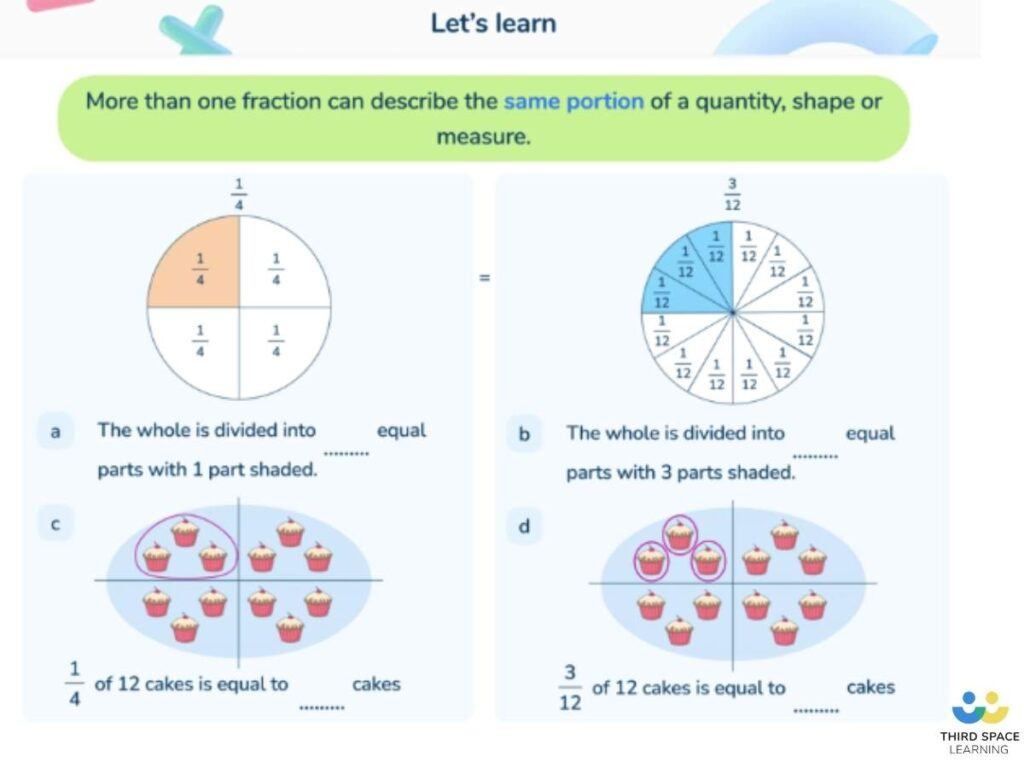
3 worked examples for non-unit fractions
Many fraction questions can be visually demonstrated with the use of bar models (as shown below), number lines, or other similar diagrams that can be clearly split into equal parts.
Fraction of an amount or set of objects
Find ⅗ of 20.
- The denominator shows how many equal parts the whole has been split into (in this case, 5) so divide the whole amount by the denominator (in this case, 20 ÷ 5 = 4)
- The numerator shows how many of those parts we need to find (in this case, 3) so multiply each part by the numerator (in this case, 4 x 3 = 12)
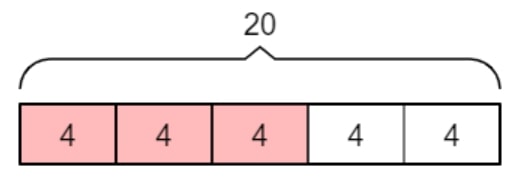
Addition or subtraction of non-unit fractions
¾ + ⅔ or ¾ – ⅔
- In order to add or subtract fractions with different denominators, first find the lowest common multiple of both denominators in order to achieve a common denominator (in this case, 12 can be used as a common denominator)
- Use the common denominator to find equivalent fractions for each fraction (in this case, ¾ = 9⁄12 and ⅔ = 8⁄12, as shown below)
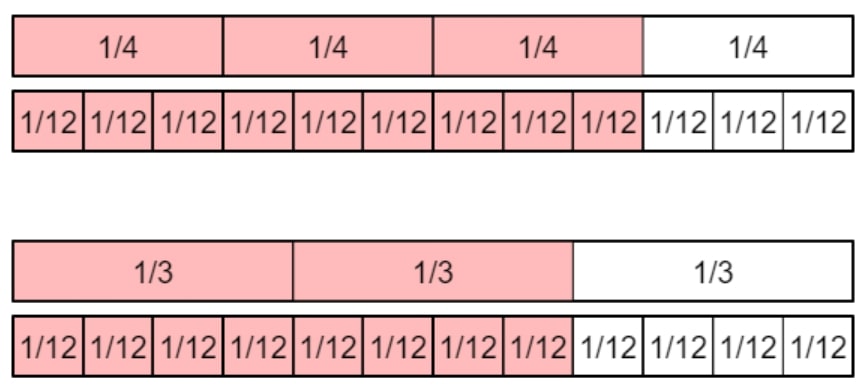
- Once the denominators are the same, the numerators can be added or subtracted as appropriate (in this case, ¾ + ⅔ = 9⁄12 + 8⁄12 = 17⁄12 or 1 and 5⁄12; or ¾ – ⅔ = 9⁄12 – 8⁄12 = 1⁄12)
Shading fractions of various shapes
Shade ¾ of each shape.
For each shape, count how many equal parts the whole has been split into, then find the fraction (in this case, ¾) of that amount and shade it.
This shape has been split into 4 equal parts; ¾ of 4 is 3, so any 3 parts can be shaded.

This shape has been split into 8 equal parts; ¾ of 8 is 6, so any 6 parts can be shaded.
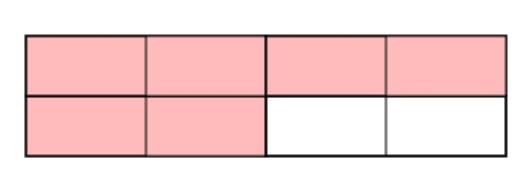
This shape has been split into 12 equal parts; ¾ of 12 is 9, so any 9 parts can be shaded.
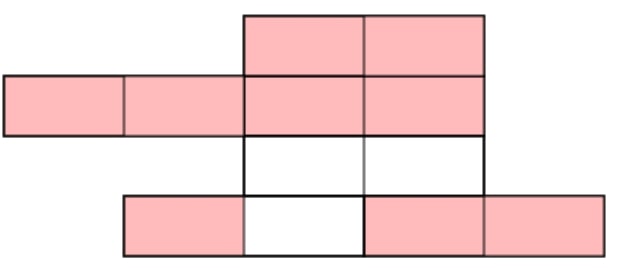
5 non-unit fraction practice questions and answers
- What is 5⁄7 of 35?
Answer: 25 - ⅔ + ⅖ =
Answer: 10⁄15 + 6⁄15 = 16⁄15 or 1 and 1⁄15 - Shade ⅖ of this shape:
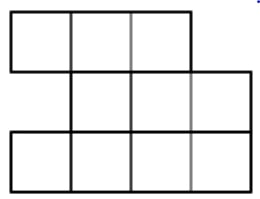
Answer: any 4 parts shaded, e.g.
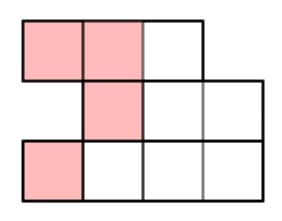
4.Continue the sequence: 2⁄3, 4⁄3, ___, ___, ___
Answer: 6⁄3 or 2, 8⁄3 or 2⅔, 10⁄3 or 3⅓
5. Use a fraction to complete this number sentence: 12 is ___ of 16
Answer: ¾
Read more: How To Divide Fractions: Step By Step Guide
In a unit fraction, the numerator is 1. In a non-unit fraction, the numerator is greater than 1.
Any fraction where the numerator is above one: three-quarters, two-thirds, twelve-tenths, etc.
It depends! As in the “examples of non-unit fractions” section above, when the numerator and denominator are equivalent, the fraction is always equal to a whole. Where those digits are above 1, it is a non-unit fraction. There is only one instance where one whole is considered a unit fraction: 1/1.
For more definitions and explanations of primary maths terms, refer to our Primary Maths Dictionary.
DO YOU HAVE STUDENTS WHO NEED MORE SUPPORT IN MATHS?
Skye – our AI maths tutor built by teachers – gives students personalised one-to-one lessons that address learning gaps and build confidence.
Since 2013 we’ve taught over 2 million hours of maths lessons to more than 170,000 students to help them become fluent, able mathematicians.
Explore our AI maths tutoring or find out about a primary school maths tutor for your school.
